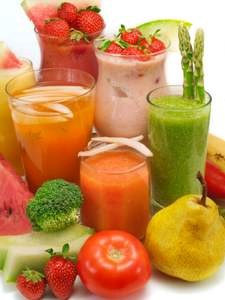Harvesting and Preserving Your Smoothie Garden
In a previous post, I wrote about vertical gardening, an artful option for growing smoothies. That got me thinking of how to capture the garden’s abundance for the dark months ahead.
Freezing is an ideal way to do that. The Old Farmer’s Almanac says that produce kept at 0°F (-18°C––) or colder will maintain its quality for up to a year.
Not everything is suited to freezing, things like watercress, cucumbers or celery will only mush so do your homework.
A benefit of freezing is that it breaks down the cell walls of plants, something any juicer or extractor worth its salt will advertise as a good thing because it makes nutrients more accessible.
To prepare for freezing, use produce that is blemish-free and fully ripe. Wash, dry, cut, and freeze pieces on a baking sheet. Store frozen pieces in a freezer bag or container.
The process of blanching, placing produce into boiling water then immediately into ice water, enables your produce to retain its bright color and, more importantly, more of its nutrients.
Many smoothie fans who share their recipes online rarely mention this step, some see no difference in the appearance but are silent on the nutritional aspect. Food experts recommend blanching.
Blanching key points:
- Prepare cold water bath while the other water is boiling, timing is critical
- Water should return to a boil within 1 minute of adding produce. Overfilling the pot will slow return-to-boil time
- Ice bath time matches boiling time
- If using plastic bags, remove as much air as possible
For a true smoothie freeze, combine most or all of your frozen ingredients. Since frozen fruit is often featured in smoothie recipes, take advantage of those you may not be able or inclined to grow yourself such as mangoes, rhubarb, or pineapple.
Use fresh fruit, too. Freezer bags would take up less space in the freezer and would travel lighter as well. My ideal:
- Leafy greens (Swiss chard, kale, spinach)
- Carrots
- Mixed berries (strawberry, blueberry)
- Apple
- Ginger
More cost effective, less to throw away or recycle than those cute little squeeze packets and glass jars of pureed baby food that have caught the attention of many of us adults.
Another option is to freeze pureed produce in ice cube trays or mini muffin pan. YouTube and other social media sites are filled with detailed how-to instructions from smoothie fans.
Investing in a high-powered blender will ensure this option does your garden proud. Add to your frozen harvest milk (alternative), proteins, nutrients, spices and herbs.
Frozen whole or pureed, in cubes or bags, the outcome is the same – at summer’s end see your freezer stocked with smoothie fixins featuring your garden’s best.
Sources
U.S. Food and Drug Administration. Raw Produce: Selecting and Serving it Safely.
Ratliff, Jennifer. How to Freeze Fresh Vegetables. eHow.com
Schmutz, Pamela & Hoyle, Elizabeth. Freezing Fruits & Vegetables. Clemson University. 2011.
About the author:
Roxanne Corbin has lived most of her life in the mid-Atlantic. She is a latent artist and wistful-thinking gardener. An information hunter by trade, Roxanne is currently working to transition from the corporate world to managing a research and writing business of her own.
amzn_assoc_placement = “adunit0”;
amzn_assoc_search_bar = “false”;
amzn_assoc_tracking_id = “trybackfarm-20”;
amzn_assoc_ad_mode = “search”;
amzn_assoc_ad_type = “smart”;
amzn_assoc_marketplace = “amazon”;
amzn_assoc_region = “US”;
amzn_assoc_title = “Items you may enjoy”;
amzn_assoc_default_search_phrase = “smoothie blender”;
amzn_assoc_default_category = “All”;
amzn_assoc_linkid = “7a8bd5a27e2e774aba4813ab8726761a”;
amzn_assoc_rows = “2”;
Check out these products as well!
